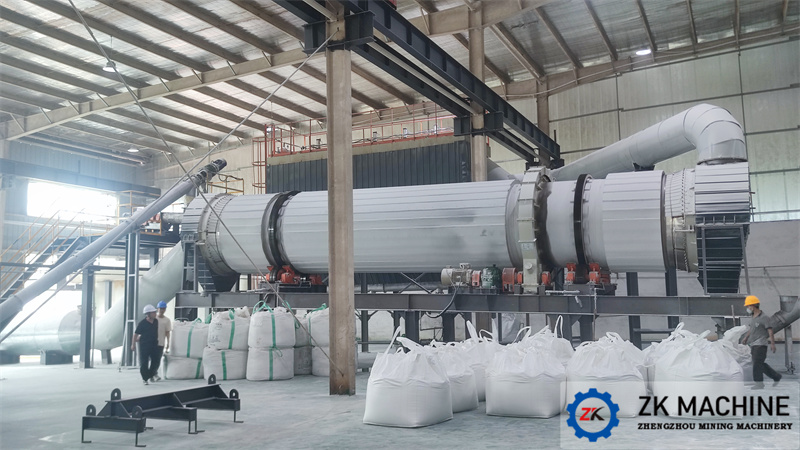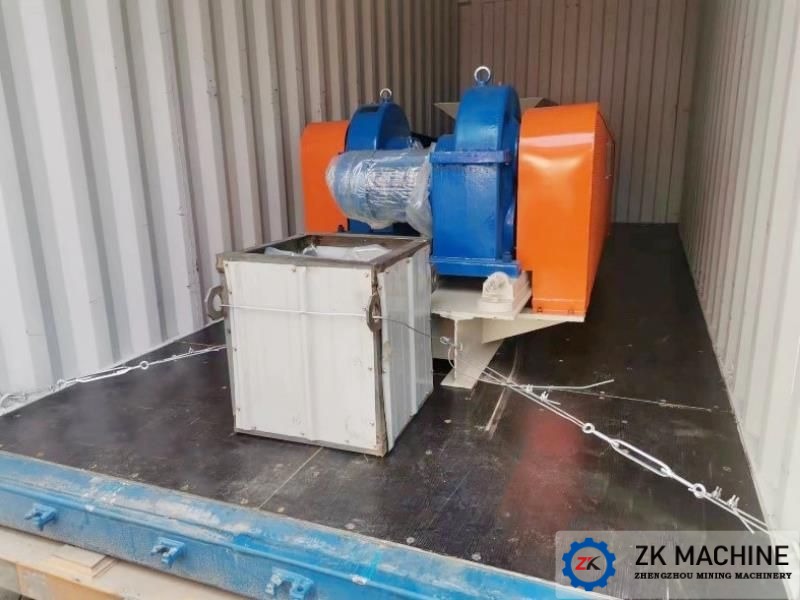Recycled Aluminum Ash Treatment Plan
1. Recycled aluminum ash composition, reaction performance and problems in harmless recycling
a. Recycled aluminum ash is gray-black grinding, containing metallic aluminum, aluminum nitride, aluminum carbide, a- and r-alumina, oxides and chlorides of other metal elements, and the composition of recycled aluminum ash is roughly as follows:
Composition | Aluminum Metal | Aluminum Nitride | Total Aluminum | Acid insoluble matter | Iron | Zinc | Cooper | Chromium |
Content% | 5-30 | 2-30 | 30-60 | 30-60 | 2-10 | 0.05-0.3 | 0.05-0.5 | 0-0.2 |
Composition | Nickel | Lead | Manganese | Calcium | Magnesium | Potassium | Sodium | Silicon
|
Content% | 0-0.1 | ≤0.1 | 0.05-0.5 | 0.5-2 | 1-5 | 0.3-0.5 | 0.8-1.5 | 3-5 |
b. Hazard description:
Recycled aluminum ash was proposed to be included in the list of hazardous waste products in 2016.
The recycled aluminum ash contains metal aluminum powder and other metal oxides. Once the reaction temperature is reached, the thermite reaction will proceed, the reaction is violent, and a lot of heat is released. Causes a deflagration or explosion.
The aluminum nitride in the recycled aluminum ash will react slowly when exposed to water, releasing ammonia gas, causing pollution to the environment.
In the process of aluminum regeneration, organic matter will be introduced to some extent. The organic metal blooms in the regenerated aluminum ash will react and volatilize organic gas under the conditions of water and preheating. Organic gas contains benzene series, which has a pungent odor, and long-term exposure will endanger human health.
The refining agent added in the production process of secondary aluminum contains soluble fluoride salt, which remains in the aluminum ash, and can be dissolved in contact with water, causing water pollution.
Other harmful components are mainly heavy metals. The ingress rate of heavy metals is extremely low and does not meet the hazardous waste standards. However, long-term exposure to the outdoor environment, under the synergistic effect of acid rain erosion or degraded ammonia, will inevitably cause heavy metals to flow out and pollute the soil.
c. Recycled aluminum ash is a kind of waste produced by the secondary aluminum industry. The amount of recycled aluminum ash is 7-12% of the output of recycled aluminum. An electrolytic aluminum plant produces 100,000-200,000 tons of aluminum ash every year. There is still no economy. High-efficiency treatment methods (some aluminum content is high and aluminum chloride content is low, which meets the steel-making deoxidizer aluminum slag standard (YS/T1177-2017) is used as a steel-making reducing agent, and some enterprises give it to cement plants to mix in cement. Although heavy metals can be fixed with cement, it is prone to accidents of burning), causing aluminum ash to be stored only in storage. Failure to achieve the desired effective treatment.
2. Treatment plan
The aluminum ash hazardous waste disposal program comprehensively utilizes aluminum ash to maximize the extraction of valuable substances in the aluminum ash, and at the same time reduce the pollution of the aluminum ash to the environment, which is a worldwide problem. There are already many patented technologies that treat aluminum ash in different ways, such as: aluminum ash is dissolved in caustic soda to produce aluminum oxide (aluminum hydroxide); aluminum ash is sintered with soda ash to produce aluminum oxide (aluminum hydroxide); aluminum ash is made from caustic soda Dissolution and soda ash sintering are connected in series to produce aluminum hydroxide or zeolite; aluminum ash is used to produce brown corundum refractory; aluminum ash is dissolved in hydrochloric acid or sulfuric acid to produce water purifying agent; aluminum ash is dissolved in acid and alkali to produce flame retardant, etc. The above are all good technologies for the treatment of aluminum ash, but due to the complex composition of aluminum ash, a single method has high processing cost, low product value, and secondary pollution such as waste slag, waste water and exhaust gas.
Nowadays, electrolytic aluminum processing enterprises mainly divide the secondary aluminum ash hazardous waste disposal program into two categories, harmless and resource-based. Harmless aluminum ash hazardous waste disposal program: through acid leaching, alkaline leaching, washing, etc., the nitride, fluoride, salt and other impurities in the secondary aluminum ash are removed to obtain harmless aluminum ash before safe filling Buried. Recycling process: After removing toxic and harmful substances, the secondary aluminum ash is processed by high temperature or cold processing to produce different products such as steel claw guard ring, brown corundum abrasive, refining agent and water purifying agent, etc., or return to the electrolytic cell as electrolytic aluminum raw material.
However, the output of secondary aluminum ash on the market is huge, with an annual output of 2 million tons. Products such as steel claw protection rings and brown corundum abrasives produced using aluminum ash are all facing the problem of unsalable sales. In recent years, a research team has continuously researched and developed a low-temperature alkaline fusion technology to treat secondary aluminum ash. Aluminium Ash Hazardous Waste Disposal Program Low-temperature alkaline smelting is a process in which metal-containing materials and alkaline medium are mixed and then smelted at a temperature much lower than the traditional pyrometallurgical smelting temperature to obtain elemental metal or soluble basic metal salt. Many advantages such as high metal direct yield, low temperature, environmental protection and so on.




